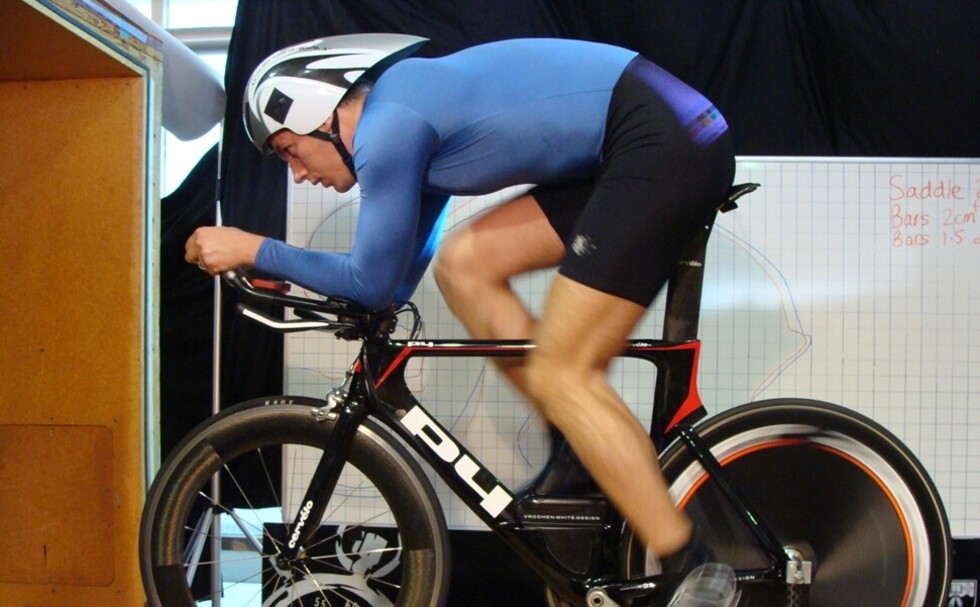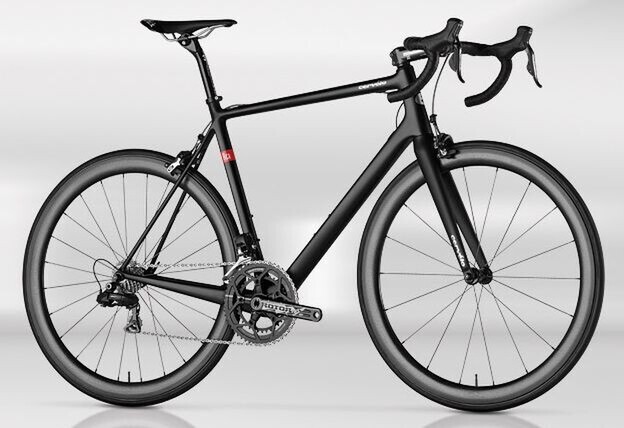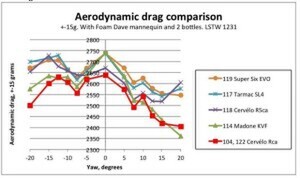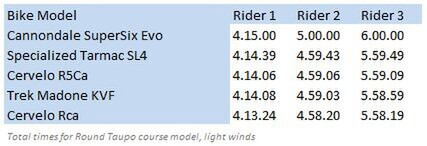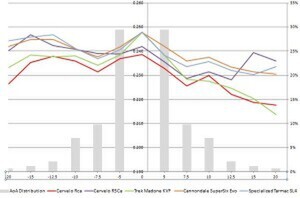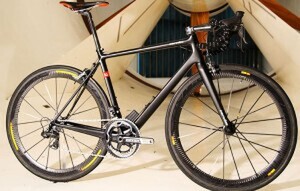Cervelo have released a successor to their Halo road bike – the R5Ca makes way for the RCa – the Ca referring to the fact that the frames are built in California. Unfortunately the price tag that accompanies the R&D and exclusivity (only 325 made) means that discussion of this bike is for most of us an academic exercise. But that doesn’t make it any less interesting (after all – no one can afford space ships but sci-fi movies are very popular).
Unlike the cycling media I’m not going to repeat all of the press release – what is particularly interesting is the tube shaping that has gone into the new frame and the comparative wind tunnel testing performed during development – so I have, of course, done a bit of extra analysis on that information.
The level of design effort for the Cervelo RCa detailed in the white paper is nothing short of astonishing. The work they have put into validating their models is more exhaustive than most companies can afford to put into the design phase.
For those not inclined to wade through the white paper here are the salient points:
- Holistic design process with goals for aero, stiffness, weight & comfort
- Nano-tech reinforced carbon, using higher grade tech than seen on bikes before
- Nickel (metal) plated Fork steerer tube to increase durability – only 50microns thick (0.05mm)
- Internal cable routing (previous R-series bikes external)
- Significant aero improvements over previous R-Series bikes and other light frames
- Slightly lighter that the R5Ca without loss of stiffness
The best way to summarise the whole process is that they’ve aimed to make the frame better in a myriad of tiny ways – adding up to a real overall benefit.
Now – this being a US$10,000 frame – it’s hard to get too excited about some of the technology that is simply too expensive to trickle down to the R3 level (ie a bit more affordable). However – the tube shaping and thus the aero benefits are likely to be seen on lower level bikes in the next year or two, so let’s consider that.
On page 20 of the white paper we find the chart shown above.
This is very interesting as we don’t often get to see comparisons of road bikes using rigorous test protocols. For instance – when Trek released the new Madone they fitted it with deep section race wheels and compared it to a Cervelo S5 fitted with training wheels. Cervelo use the same wheelset for all testing.
Even better – these numbers are based on testing with the foam Dave Zabriskie simulacrum – emulating the effect of having a rider on the bike.
Where I query the results is page 21 of the white paper – showing a 10.2W advantage at 40kph for the RCa compared to a Cannondale Super Six EVO (the slowest bike tested).
That figure was arrived at using a popular rule of thumb. We can do better than that.
Firing up the course model for the Round Taupo ride (a 153km event with 1800m of climbing) and digitising the aero chart to allow comparisons for the tested bikes tells a different story.
Because this is a road race -riders are in a peloton. So I turn on the drafting effect in the model (which discounts any aero gains). Using the weather conditions from yesterday (14th March 2013) shows that an RCa would have a benefit of 4W for a rider going 40kph in a decent sized group. And yes – that is taking account of the 90g weight difference.
If we profile 4.15, 5.00 and 6.00 hour riders the different bikes would yield the following times:
Note that the time gains are virtual – you will still go the same speed as the group but just save a bit of energy – I’ve expressed it as times to give a meaningful context.
As wattage – for a 4.15hr rider 1min = 2w
5.00hr rider 1min = 1.1w
6.00hr rider 1min = 0.7w
(based on certain assumptions about rider weight and aerodynamics for each of those levels).
One thing that stands out is that the Trek Madone KVF – with its integrated brake calipers (including a hidden rear) and aggressive tube shaping – is very similar in performance to the squarish shaped R5Ca and well behind the subtly shaped RCa.
This is because of the poor low Angle of Attack performance of the Trek. In fact – the Trek is very similar to the Cannondale and Specialized in that low AoA region. If I were to hazard a guess I’d think that the wide headtubes dominate the aerodynamics and that the KVF shapes only have an effect once the wind is coming from the side more. The Cervelos (as usual) are narrower from the front.
This is the Cervelo data plotted against the AoA distribution for our 6hr rider – showing that the majority of the wind is coming from an angle that strongly favours the Cervelos.
It would have to be very windy and a slow peloton for the Trek Madone to match the performance of the R5Ca (and thus the current R3 which shares the same tube shapes).
A lot of companies are putting effort into persuading the market that high AoA (or yaw) performance is important. But in bike racing, which is typically high speed and there is sheltering from other riders, it is rare for high AoA performance to outweight low AoA performance when considered over a whole ride.
I should point out that Cervelo have not shown comparisons to any of the true ‘aero’ road bikes – but the numbers given are much higher than previous tests with the same protocol on the S5.
To conclude – I’m excited about the Cervelo RCa, partly because it is an R&D exercise that (well heeled) consumers can buy into – representing the pinnacle of engineering that only a handful of companies in the bike industry can bring to bear. But mostly because all that research will lead to better bikes for the wider market.
And finally – if you are interested in an RCa, get in touch early…
